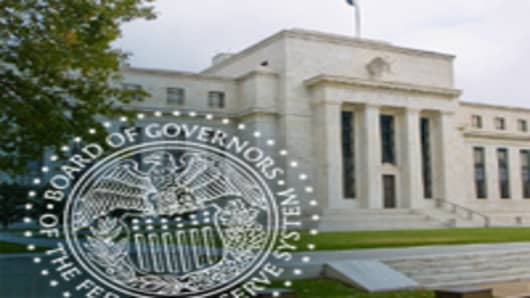For almost two years, the market wanted the Fed to throw everything it had at the financial crisis, sooner than later in most cases. Now they can’t wait for the Fed to start taking it back.
There are good reasons why that is not the case.
First, the Fed is about to get an infusion of new talent, in the form of two governors and a vice-chairman, Janet Yellen, who happens to be a dove.
Not only will the Board of Governors be at full strength, but a period of uncertainty will end.
More importantly, Fed watchers need to stop comparing the Bernanke Fed to the Greenspan one. The Bernanke Fed is as much about mechanics and methodology as it is about transparency. In other words, it should be more predictable.
If you look at the Fed’s navigation of the financial crisis as a trip down a dead-end street, then the way out should look a lot like the way in, except that some things will happen in reverse.
In using both conventional interest-rate policy as well as innovative tools to affect monetary and liquidity conditions, there’s no more reason now than before to separate the two components, applying a one-or-the-other mentality.
If anything, the Fed can be more methodical and calculating in undoing things because it is all the more wiser about their facility and presumably confident about their utility.
So, thus far, the Fed is backing out in a reasonable way.
One of the first things the Fed did during the beginning of the crisis was lower the discount rate in August 2007, so perhaps it was no coincidence that in raising it three months ago, it was one of its first moves.
One of the last things it did was decide to buy MBS and GSE debt to prop up the mortgage market. The purchases began in early January 2009, when the recession was probably at its deepest point. The Fed told us when the program would end, 15 months later, and made regular updates on its progress.
Given that, it seems unlikely that the Fed would want to rush into selling those assets now, especially without the benefit of an equally articulated, methodical and transparent plan with a predefined duration.
At the least, the Fed might disclose the IDs and maturity dates of this debt before selling them, but it is more likely that the first thing the FOMC will do is say it is working on a plan to dispose of the securities in an orderly, transparent fashion. Think gradual, incremental and regular.
Why should the Fed worry about its balance sheet at this point when lending and borrowing are still both weak? Inflation? Not likely with the core rate running at an annual rate of 1.1 percent.
The market reacted very well to the end of the debt-purchase program, with a minimal rise in long-term rates. What’s wrong with buyers getting a bit hungry? Isn’t all about demand at this point?
Secondly, much has been made of the Fed’s interest-on-excess-reserves program as being some telltale policy tool, even a substitute for the federal funds rate, because rates were so low they were essentially meaningless.
The policy was instituted in Oct 2008, not long after the Lehman Bros collapse, so in that way it is not unreasonable to think it should be one of the first to go.
It is forgotten, however, that this Fed power was approved in 2006—a very good time for the economy, the markets and the financial sector, as well as one of 5-percent plus Fed funds rate — and set to go into effect in 2011. (The same legislation that included TARP moved up the start date to 2008.)
From the outset, the Fed said IOER simply “makes it easier … to implement the target federal funds rate."
The Fed didn’t go to its went near zero-rate, fed-funds target until December 2008, probably feeling somewhat more confident that it could actually achieve the target rate, which wouldn’t be easy under any circumstances.
The drastic and dramatic move also foreshadowed worse things to come for the economy, months of brutal job losses and soaring unemployment before the economy bottomed sometime in the late spring/early summer.
Why then, again, would the Fed be in a rush to tinker with its excess-on-reserves program if it has no intention of doing the same with its federal funds rate?
Finally, the Fed’s diverse loan-facility programs created on a gradual basis during the crisis—starting with the Term Auction Facility in late 2007—are being retired on deadline or being allowed to die a natural death, so to speak.
The last TAF auction in March, for instance, yielded a paltry bid-to-cover ratio of 0.14 percent, meaning demand was almost non-existent.
Developments like that are bound to make the Fed more confidant. So may the market’s emerging impatience about change. The Fed will taketh away but chances are it will take its time.



